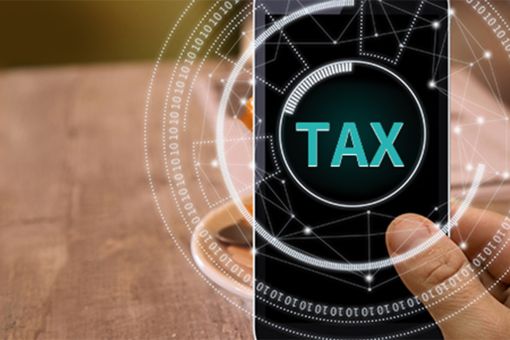Summary
- The State Taxation Administration (“STA”) recently issued a Circular on further deepening the reform of tax administration to simplify and streamline tax administration process, and enhance taxpayer experience, with the aim to cultivate and stimulate market vitality (“the Circular”), to introduce 15 new measures to enforce tax collection and administration. Article 10 of the Circular which imposes an additional tax reporting requirement and enforces existing tax reporting requirements on Employee Share Ownership Plan (“ESOP”), has attracted a lot of market attention.
Background
In recent years, the China tax authorities have been increasingly focusing on individual income tax (IIT) compliance by administration and collection enforcement. To strengthen administration and improve taxpayer experience, and along with the current trend ESOP being widely used as talent attraction and retention tools, the STA recently issued the Circular, which imposes an additional tax reporting requirement and enforces existing tax reporting requirements on ESOP in China.
Key contents
The Circular sets out the following tax reporting requirements for companies with an ESOP:
- Complete and lodge the equity incentive details disclosure form (“the Form”¹) to the in-charge tax authorities within 15 days following approval of a new ESOP
- Complete and lodge the Form with relevant supporting documentation for ESOP that have been implemented, to the in-charge tax authorities by December 31st, 2021
- Continue to submit details on ESOP to the in-charge tax authorities within the prescribed timeframe in accordance with the prevailing law and regulations².
The reporting requirements also apply to domestic companies’ participating in ESOP of the overseas companies.
1. The Form mainly covers:
➣ Basic information of the participating companies and the target companies, and their connection, e.g. direct or indirect holding relationship, direct or indirect variable interest entities (“VIE”) structure, etc.
➣ The type of awards and the approval date to implement ESOP
➣ Basic information of the participants, e.g. personal details, job title, grant details, vesting dates, etc.
2. Notice of Ministry of Finance and State Taxation Administration on Issues relating to the Levy of Individual Income Tax on Personal Income from Stock Options (Cai Shui (2005) 35) (“Circular 35”); Notice of the Ministry of Finance and the State Taxation Administration on Improving Income Tax Policies Relating to Equity Incentives and Provision of Technology in Exchange for Shareholding (Cai Shui [2016] No. 101) etc.
KPMG observations
Based on contents of the Circular, our view is that the STA is aimed to:
- Strengthen administration of ESOP implementation in China
- Enforce collection of IIT due from participation in ESOP
- Regulate appropriate use of preferential tax treatment on qualified equity awards
In view of the above and based on our preliminary discussions with several local tax authorities in major cities, including Shanghai, Beijing, Shenzhen and Guangzhou recently, two categories of companies are impacted:
- Category 1: Companies that have approved implementation of ESOP in China
➣ Public companies (domestic or overseas)
➣ Private companies
- Category 2: Companies that are currently implementing ESOP in China
➣ Public companies (domestic or overseas)
➣ Private companies
In order for companies to meet the new and ongoing reporting requirements in a timely manner, the following actions where relevant should be considered:
- By December 2021
➣ Establish equity incentive based compliance calendar and corresponding standard operation procedure in order to meet China compliance requirements timely (applicable for all companies)
➣ Complete the new ESOP reporting (category 1 and category 2 companies that have not completed the equity related tax reporting before)
- Starting from 1st Jan, 2022
➣ For new plans approved, complete equity incentive reporting by 15th of the following month
➣ For new grants/vest/exercise, complete Circular 35 reporting by 15th of the following month
Furthermore, it is anticipated that:
- The Circular requires companies to lodge the completed Form with corresponding supporting documents by the end of 2021. In view of the timeline, it is possible that the STA may rely on the data collected from this year-end reporting to assess whether it would be necessary to extend the current preferential tax treatment for equity incentive income beyond 2021.
- Where an ESOP is implemented for participants in China under a VIE structure, we have observed that application of IIT treatment have been inconsistent across tax bureaus, particularly on whether the preferential tax treatment can be applied. The Form explicitly includes VIE structure (direct or indirect) as one of structures under which reporting is required if an ESOP has been approved for implementation or has been implemented. It begs the question then as to whether this suggests that preferential tax treatment can be applied to ESOP awards granted to participants under a VIE structure?
- IIT treatment of ESOP awards granted through indirect shareholding platform, e.g. Limited Liability Partnership, Employee Benefits Trust, etc., may also become the subject of discussion in the coming year.
KPMG will continue to pay close attention to the specific operating rules of the local tax authorities regarding the requirements stipulated in the Circular. If you have any related questions, please feel free to contact us.
Connect with us
- Find office locations kpmg.findOfficeLocations
- kpmg.emailUs
- Social media @ KPMG kpmg.socialMedia


